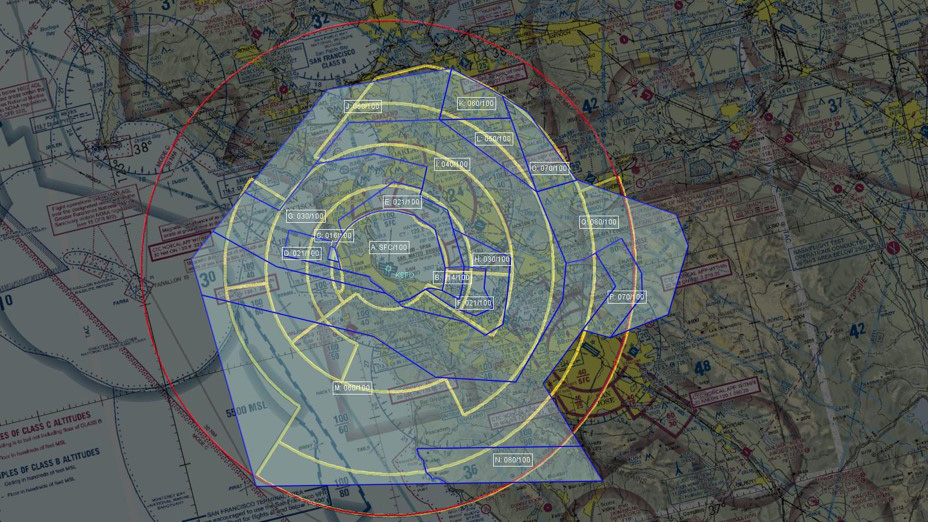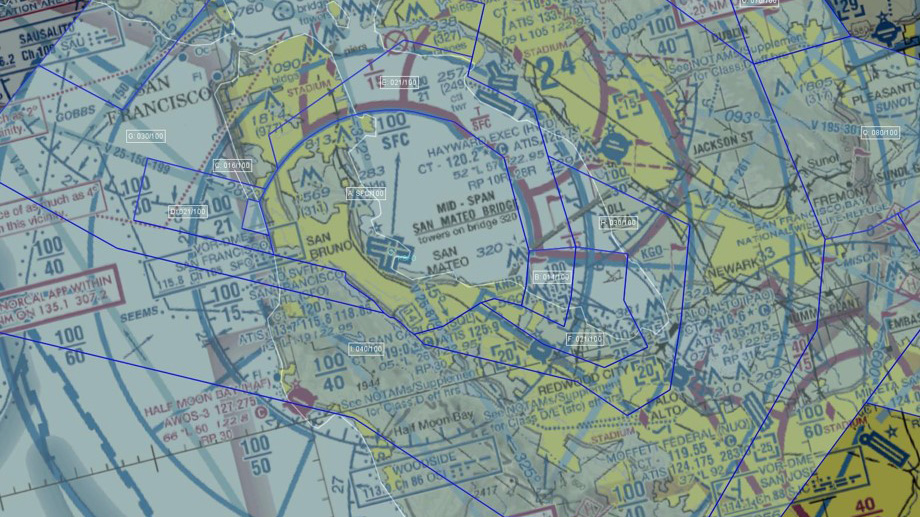FAA seeks San Francisco Class B airspace redesign
The FAA plans to redesign San Francisco’s Class B airspace and has offered a proposal that moves away from the typical concentric-circles airspace configuration in favor of a layout based on updated arrival and departure routes to and from San Francisco International Airport.

AOPA supports many aspects of the plan as a member of the San Francisco Class B Ad Hoc Committee convened by the FAA in 2015 to provide recommendations from aviation stakeholders. However, AOPA independently urged several changes the association believes would improve the design and the design process. AOPA encourages members to review the Notice of Proposed Rulemaking for the airspace redesign, published Jan. 19, and submit formal comments by March 20, as provided below.
“Further, this effort supports the FAA's national airspace redesign goal of optimizing terminal and enroute airspace to reduce aircraft delays and improve system capacity,” the regulatory filing says.
Adopting a new design concept not based on customary concentric circles of airspace within the Class B area would allow the FAA to minimize Class B airspace needed to contain instrument approaches, and permit some current Class B airspace to be designated Class E or Class G “to make it available for nonparticipant aircraft circumnavigating the Class B airspace area,” the proposal says.
The FAA also believes the modifications would better separate arriving and departing IFR aircraft from VFR aircraft operating in the vicinity.
The most recent modification of San Francisco’s Class B airspace took effect in June 2000. It was based on air traffic activity levels from the 1990s, the FAA said.
Since then, changes have occurred including criteria for charting instrument approach procedures; advances in flight deck technology allowing “aircraft automation to manage both the lateral and vertical flight path”; airframe and wing technology advances; optimized profile descent procedures; and “industry-wide migration to satellite-based global positioning system (GPS) area navigation procedures from procedures utilizing ground-based navigational facilities,” the FAA said.

The San Francisco Class B Ad Hoc Committee provided its recommendations to the FAA in a report on May 27, 2016, to which the FAA responded in the NPRM.
“AOPA supports many aspects of the proposal, but believes the airspace design and the process could be improved,” said Rune Duke, AOPA director of airspace and air traffic.
AOPA noted on behalf of general aviation that some aspects of the proposal failed to meet FAA airspace requirements, and the association urged the FAA to ensure compliance to avoid excursions from Class B airspace, which pose “an operational issue and safety hazard.”
AOPA pointed out that Class B general design guidance provided in 15-2-3 of FAA Order 7400.2 “is largely not followed by this redesign with positive and negative implications.”
With GPS-based navigation technology a focus of the redesign, AOPA added that “there are many pilots flying without moving maps and airspace should be designed to the maximum extent in a simple and easy to identify manner.”
AOPA also requested that the FAA reexamine areas where the Class B is being “expanded, lowered, or maintained at an artificially lower floor altitude to provide a buffer between the bottom of the Class B and the actual altitude traffic inbound or outbound to the primary airport (SFO) is predicted or verified to be operating,” and produce the data used to calculate the altitudes used.
Members are encouraged to study the proposal and submit comments by March 20 online or by mail to U.S. Department of Transportation, Docket Operations, 1200 New Jersey Avenue SE, West Building Ground Floor, Room W12-140, Washington, DC 20590-0001. Please identify FAA Docket No. FAA-2017-0653 and Airspace Docket No. 17-AWA-2 at the beginning of your comments.
Please also share your comments with AOPA.



